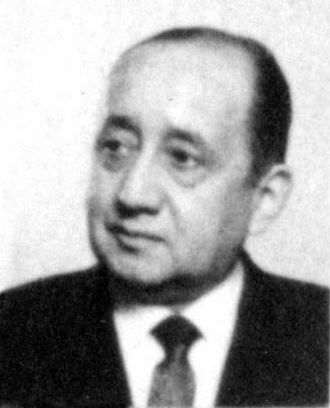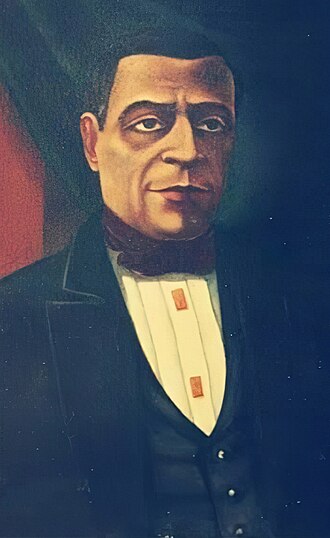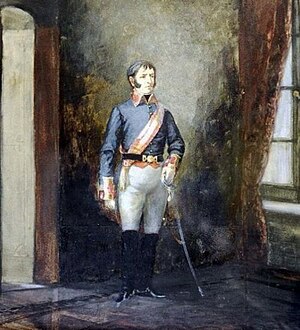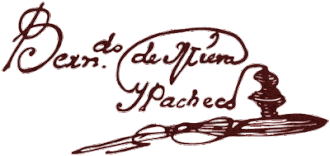Discover Your Roots
SIGN UPDiscover Your Roots
SIGN UPBernardo is a male given name of Spanish origin, meaning "Bold As A Bear." It may have derived from the Germanic name Bernhard. The name Bernardo has a strong historical and literary presence. Notable figures with this name include Bernardo Bertolucci, an Italian film director, and Bernardo de Gálvez, a Spanish military leader who aided the United States in the American Revolutionary War. In literature, Bernardo is also known as the name of a character in William Shakespeare's play Hamlet and the leader of the Sharks in West Side Story. Additionally, Bernardo has mythical associations, such as Bernardo del Carpio, a legendary Spanish medieval hero. Whether in history, literature, or myth, the name Bernardo carries the powerful connotation of boldness and strength, reflecting its meaning, "Bold As A Bear."

Bernardo Leighton Guzmán (August 16, 1909 – January 26, 1995) was a prominent Chilean Christian Democratic Party politician and lawyer, who held ministerial positions under three presidents during his 36-year political career. Known for his early activism against dictatorship and his role in founding the National Falange, which later merged with the Christian Democratic Party, Leighton was a significant figure in Chilean politics. However, his outspoken criticism of Augusto Pinochet's regime led to his exile and a targeted assassination attempt by Operation Condor. In 1975, he and his wife were severely injured in a shooting orchestrated by DINA, the Chilean secret police, resulting in lasting damage to Leighton's brain and ending his efforts to unite opposition groups against Pinochet. Despite the challenges, Leighton returned to Chile in 1978 and lived in private until his passing in Santiago.In his personal life, Leighton was married to Ana María Fresno Ovalle, who became a paraplegic due to the assassination attempt and passed away in 2011. Their marriage was childless. Bernardo Leighton's legacy remains an indelible part of Chilean political history, marked by his unwavering commitment to democracy and human rights.References:- "La Tercera" biography- National Security Archive

Bernardo Peres da Silva (15 October 1775 – 18 November 1844) was a prominent Portuguese politician and former medical practitioner, notable for being the first native Goan to serve as the governor of Portuguese India. Born in Neura Island, Goa, he overcame early orphanhood and went on to complete his education at the prestigious Escola Médico-Cirúrgica de Goa. Peres's political career was marked by significant events, including leading a popular insurrection in Goa, being elected as a representative to the Portuguese Parliament, and serving as the Prefect of Portuguese India. His tenure as Prefect was characterized by efforts to reform and improve the administration, although it faced resistance from certain factions within the community. Peres's legacy is defined by his unwavering dedication to advocating for greater political liberty and liberties for the people of Portuguese India. His contributions as a pioneering figure in Goan and Portuguese colonial history continue to be recognized and remembered to this day.

Bernardo Luis de Velasco y Huidobro (20 August 1742 – c. 1821) was a significant figure in the Spanish American wars of independence. He served as the last Spanish governor of the Intendency of Paraguay and commanded royalist military forces in the war. Born in Villadiego, Burgos, Spain, Velasco was known for his military prowess and leadership qualities. Despite his initial apprehension about governing, he was appointed as the governor of the "thirty towns of the old Guarani Missions" by King Charles IV. Velasco focused on improving economic aspects, promoting education, and pioneering smallpox vaccination during his tenure. His efficient administration and proactive measures led to advancements in various areas, such as leather production and yerba mate cultivation. Later, he was appointed as the Intendant Governor of Paraguay, replacing the controversial Lázaro de Ribera y Espinoza. Velasco's dual governance of Paraguay and the Missions reflected the trust and confidence placed in him by the Spanish authorities. His contributions to the military and civil administration during a crucial period in Spanish American history solidify his legacy as a notable figure in the region's independence struggles.

Bernardo de Sá Nogueira de Figueiredo, 1st Marquess de Sá da Bandeira (1795–1876) was a prominent Portuguese nobleman and politician who served as Prime Minister of Portugal five times. Born in Santarém, he staunchly supported the abolition of slavery in Portugal and its domains. Sá Nogueira de Figueiredo actively participated in the Liberal Wars and was wounded, leading to the amputation of his right arm. He held various government positions, including Minister of the Navy and Prime Minister during multiple terms. Despite never marrying, he had a legitimised daughter, Luísa Aglaé Fanny de Sá Nogueira. Notably, the city of Lubango in Angola was named Sá de Bandeira during Portuguese rule. Sá Nogueira de Figueiredo received several noble titles and was also a freemason. His dedication to political service and advocacy for social reforms left a lasting impact on Portuguese history.Keywords: Bernardo de Sá Nogueira de Figueiredo, 1st Marquess de Sá da Bandeira, Prime Minister of Portugal, abolition of slavery, Liberal Wars, nobleman, Portuguese history, political service, social reform, freemason

Bernardo de Miera y Pacheco (4 August 1713 – 4 or 11 April 1785) was a prominent cartographer and artist known for his significant contributions to New Spain. He was a versatile polymath, excelling in various fields such as astronomy, mathematics, geography, and sculpture. Born in Cantabria, Spain, Miera emigrated to New Spain and settled in El Paso, where he pursued diverse roles including merchant, debt collector, rancher, and military officer.Miera's notable accomplishments include leading military campaigns, creating the first map of the Navajo territory, and mapping the Rio Grande. He also served as the cartographer for the Domínguez–Escalante expedition and accompanied Governor Juan Bautista de Anza on a punitive expedition against the Comanches.His legacy lives on through his influential maps, which were examined by Alexander von Humboldt and later copied by American mapmakers. Miera's work continues to be studied and celebrated for its historical significance.For further reading on Bernardo de Miera y Pacheco, you may refer to the works "The Art & Legacy of Bernardo Miera y Pacheco: New Spain's Explorer, Cartographer, and Artist" edited by Josef Diaz and "Miera y Pacheco: A Renaissance Spaniard in Eighteenth-Century New Mexico" by John L. Kessell.[Article about the 1758 map, with a detailed image
All images displayed on this page are sourced from Wikipedia or Wikimedia Commons.We use these images under their respective Creative Commons or public domain licenses. Wherever applicable, author attributions and license information are provided. If you believe an image is used incorrectly or outside its license terms, please contact us so that we can review and correct the issue.